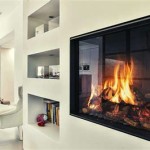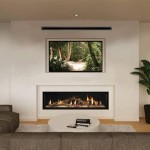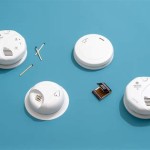Grate Heater For Wood Fireplace: Enhancing Efficiency and Comfort
Wood-burning fireplaces offer a classic aesthetic and a comforting source of heat. However, traditional fireplaces are often inefficient, with a significant portion of the heat escaping up the chimney. A grate heater for a wood fireplace is designed to improve heat output and efficiency by circulating air around the fire and redirecting it back into the room.
A grate heater, also sometimes referred to as a fireplace grate with blower or a heat exchanger grate, is a device installed within the fireplace firebox. It consists of a heavy-duty grate, typically constructed from steel or cast iron, designed to hold the firewood. Integrated within the grate structure are hollow tubes or channels through which air is forced using an electric blower fan. As the fire burns, the air is heated by direct contact with the hot metal surfaces of the grate and the burning wood. The warmed air is then blown back into the room, effectively increasing the convective heat transfer.
The primary function of a grate heater is to improve the efficiency of a wood-burning fireplace. Without a grate heater, a considerable amount of heat is simply lost up the chimney. This occurs due to the strong updraft created by the fire, which pulls heated air directly out of the room and replaces it with colder air. The installation of a grate heater disrupts this process by capturing and redirecting some of the heat that would otherwise be lost.
Grate heaters are particularly beneficial in homes with older fireplaces that lack modern features like insulated fireboxes or tight-fitting doors. In such cases, a grate heater can provide a noticeable improvement in heating performance. It can also be a cost-effective alternative to more extensive fireplace renovations or the installation of a new heating system.
The effectiveness of a grate heater depends on several factors, including the size of the fireplace, the design of the grate heater itself, the type of wood being burned, and the insulation of the home. A larger fireplace will generally require a larger grate heater with a more powerful blower to effectively circulate air throughout the room. Similarly, hardwoods like oak and maple, which burn hotter and longer than softwoods like pine, will contribute to a greater heat output when used with a grate heater.
Understanding the Mechanics of Heat Transfer
The performance of a grate heater relies on the principles of heat transfer, primarily convection. Convection is the process by which heat is transferred through the movement of fluids (in this case, air). In a standard fireplace, heat is radiated directly from the fire, but much of this heat is lost as the hot air rises rapidly and escapes up the chimney. A grate heater enhances convective heat transfer by forcing air to circulate through the heated grate structure.
The blower fan plays a critical role in this process. It draws cooler air from the room and pushes it through the hollow tubes or channels within the grate. As the air passes through these heated pathways, it absorbs heat from the metal. The heated air is then expelled back into the room, warming the surrounding area. This forced convection significantly increases the amount of heat that is circulated into the room compared to a traditional fireplace where heat is primarily radiated.
The surface area of the grate is also a key factor. A grate with more surface area in contact with the fire will be able to transfer more heat to the air passing through it. This is why grate heaters are often designed with complex configurations of tubes and channels to maximize the surface area available for heat exchange.
Furthermore, the materials used in the construction of the grate heater influence its efficiency. Steel and cast iron are commonly used due to their high thermal conductivity and ability to withstand the high temperatures within a fireplace. These materials effectively absorb heat from the fire and transfer it to the air circulating through the grate.
Factors to Consider When Choosing a Grate Heater
Selecting the right grate heater for a wood fireplace involves considering several important factors. The size of the fireplace opening is paramount. The grate heater must fit comfortably within the firebox without obstructing the airflow or interfering with the fire's ability to burn properly. Measure the width, depth, and height of the fireplace opening to ensure compatibility with the dimensions of the grate heater.
The heating needs of the space are another crucial consideration. A larger room or a poorly insulated home will require a more powerful grate heater with a higher BTU (British Thermal Unit) output. BTU is a measure of the amount of heat that a device can produce. Choose a grate heater with a BTU rating that is appropriate for the size of the room you are trying to heat.
The quality and durability of the grate heater are also important. Opt for a grate heater constructed from heavy-duty materials like steel or cast iron. These materials are more resistant to warping and cracking under the high temperatures of a wood fire. Look for a grate heater with welded construction for added strength and longevity.
The blower fan is a critical component of the grate heater. Consider the noise level of the fan, as some models can be quite loud. Look for a grate heater with a variable speed fan, which allows you to adjust the airflow and noise level to your preference. Also, ensure that the fan is easily accessible for cleaning and maintenance.
Finally, consider the design and features of the grate heater. Some models come with thermostats that automatically adjust the fan speed based on the temperature of the fire. Others have built-in ash trays for easier cleanup. Choose a grate heater with the features that best suit your needs and preferences.
Installation and Maintenance of a Grate Heater
Installing a grate heater is generally a straightforward process that can be completed by most homeowners. However, it is essential to follow the manufacturer's instructions carefully to ensure proper installation and safe operation. The first step is to remove any existing grate from the fireplace. Then, carefully place the grate heater inside the firebox, ensuring that it is centered and stable.
Connect the blower fan to a power outlet. Some grate heaters come with a power cord that plugs directly into a wall outlet, while others may require hardwiring. If you are not comfortable working with electrical wiring, it is best to consult a qualified electrician.
Before using the grate heater for the first time, inspect it carefully for any damage or loose connections. Make sure that the blower fan is operating properly and that the airflow is unobstructed. Allow the grate heater to burn for a short period of time to allow any manufacturing oils or residues to burn off.
Regular maintenance is essential to keep your grate heater operating efficiently and safely. After each use, remove any ashes from the firebox and clean the grate with a wire brush. This will help to prevent the buildup of creosote, a flammable substance that can pose a fire hazard.
Periodically inspect the blower fan for dust and debris and clean it as necessary. A dirty fan can reduce airflow and cause the motor to overheat. Also, check the electrical connections to ensure that they are tight and secure.
If you notice any signs of damage or wear, such as cracks in the grate or a malfunctioning fan, repair or replace the grate heater immediately. Operating a damaged grate heater can be dangerous and may reduce its efficiency.
By following these installation and maintenance guidelines, you can ensure that your grate heater provides years of efficient and safe heating.
In conclusion, a grate heater for a wood fireplace can significantly enhance the efficiency and comfort of a traditional fireplace. By understanding the principles of heat transfer, carefully considering the factors involved in choosing a grate heater, and properly installing and maintaining the device, homeowners can enjoy the warmth and ambiance of a wood-burning fire while minimizing heat loss and maximizing energy savings.

5 Tube Grate Heater Wood Burning Fireplaces

Tube Fireplace Grate Heater For Zc Fireplaces

Choose A Fireplace Grate Heater From The 3 Top Ing For 2024

Grate Heater With Masonry Fireplace Doors Customized

Grate Heater Wikipedia

4 Tube Grate Heater Wood Burning Fireplaces

Warming Vortex Fireplace Blower Grate Heater 2220

Medium Double Row Tube Fireplace Grate Heater With Dual Blowers Hastyheat

Cozy Grate Encino Fireplace

5 Tube Fireplace Grate Heater For Zero Clearance Fireplaces
Related Posts








